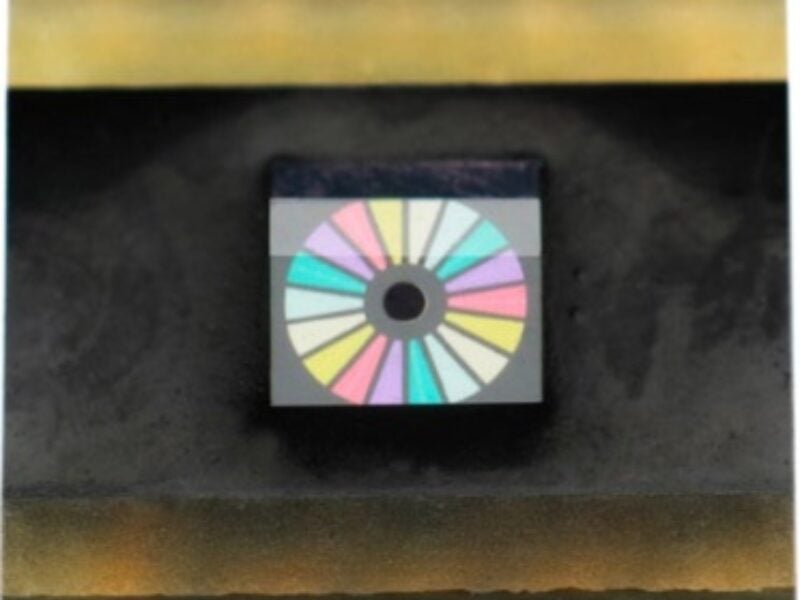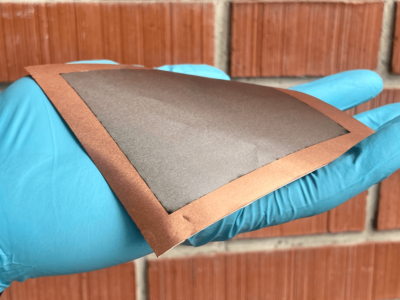
Using color sensors to diagnose skin diseases
Color related skin conditions or alterations can be determined accurately using optical instruments. While in the past such skin color measurements were only possible in laboratories with expensive spectrometers or special measurement equipment, nowadays doctors can use handhelds based on multi-spectral color sensors. The demand for precise color measurement in both the area of analysis using instruments for medical diagnostics such as point-of-care (Po Ct) and in dermatological research and applications, and especially for diagnostic documentation, is constantly rising. For example, in pharmacology – skin conditions or changes as a result of disease or environmental influences can be determined and documented via optical measuring instruments.
The results of these measurements can be used both for evaluating skin diseases and for preparing treatment or assessing treatment success. Gray scale levels, colors and spectral data followed by a subsequent analysis, color and spectral algorithms as well as application-specific evaluation are the basis for a broad application of optical measurement methods in the field of diagnosis.
In the past, skin measurements could only be performed in laboratories with high-end and expensive spectrometers or special instruments. Nowadays it is possible to perform same or similar analysis applications, such as the measurement of solids or liquids based on multi-spectral color sensor technology. Thus the same performance is provided at much lower cost. Using a non-contact measuring system, skin diseases such as psoriasis and neurodermatitis can be assessed, based on the erythema degree and the skin type (taking erythema and melanin content into account) or skin redness can be determined during a patch/irritation test.
Sensor tasks are also found in spectral skin analysis with (skin) color management as recommendation and follow-up tools for prescribing medication. Multi-spectral sensors offer an excellent price/performance ratio for use in laboratory technical measurements or in “mini-laboratories” dedicated for example to evaluate test strips for clinical/chemical parameters such as glucose, ascorbic acid, keton bodies, protein, Ph values, blood, nitrite, leukocytes, bilirubin, and urobilinogen. Other possible fields of application include the spectral detection of medical and biomarkers such as in pregnancy tests, ovulation tests, diabetes, infectious diseases, and drug tests. Such spectral techniques can be used for microfluidic measurements to analyze fluid contents of medical or chemical cuvettes. In this method transmitted light reaches to a sensor while passing through the fluid contents. Spectral measurements are performed and based on a sample of reference water the spectral shift allows to determine various chemical contents and parameter within the measured sample. Using color sensors, a reference application can be built into a compact handheld measurement device for microfluids. This allows the convenient measurement and data transfer to evaluation systems

Click on image to enlarge
Color measurement methods
Color measuring tasks are performed in different ways. Tristimulus sensors are compact and optimized for large numbers and fast measurement tasks. Using an RGB filter, they are ideal for color detection. True color sensors with XYZ filter are suitable for absolute color measurement based in the Cie 1931 standard for human eye perception. Both sensors work according to the colormetric principle.
Their results depend on the light source and are subject in relation to the effects of metamerism. Although spectrometers are very precise and independent of light, they are also expensive and usually very complex.
They are slow due to their system and not suited for fast processes. A solution that combines the advantages of both technologies is more suitable – small like a sensor, robust and inexpensive, with the results of a spectrometer (highly precise and free of metamerism). Metamerism is the name of an effect in optics which creates the same color impression in people when objects with different spectral distributions look alike under the same light source.
The multi-spectral color sensor MMCs 6 takes this approach for specific applications in absolute color and spectral measurement.
The sensor is based on 6+1 spectral/selective detectors. It enables fast, precise measurement of the spectral power density interpolated via 6+1 channels. The detector supplies the measurement values, which are converted in the downstream amplifier and microcontroller directly in a color spot xyY/l a*b*/l u’v’ or optionally can be used as the starting point for spectral processing, depending on the application.
All-in-one: Colormetric and spectral
The core of this color measurement equipment is a Jencolor color sensor from MaZet, which carries out spectral measurements for medical and general applications. This multi-spectral color sensor closes the gap between previously used RGB sensors and spectral measuring devices for sensor applications. On a semiconductor base with thin optical layers, the sensor performs a spectral color measurement directly on the sensor – see figure 1 – using 6+1 characteristic spectral curves in the visible range V is (Visual).
The color is evaluated on the radiometric level. As a result, one obtains the spectrum of a color as with a spectrometer, which is then used for calculating the color spot within each color space. The advantages of such technology are that substantially greater information density is achieved in the measurement, which gives more precise results in the color measurement. Consequently, both results, spectrum and color spot are available for further analysis. The sensor therefore provides another advantage, in that metamerism effects can be filtered out and they are measurable in the measuring and evaluation of colors – see figure 2.

The six characteristic spectral curves of the MMCs 6 are arranged in a way that they overlap at their limits. The result is that the least possible number of gaps is present in the visible spectrum. Consequently, misinterpretations of colors are minimized and measurement accuracy is increased. MAZeT provides the MMCs 6 as semiconductor sensor, including in combination with sensor signal amplifiers and as OEM hardware solutions with a comprehensive software library for highly precise and fast color measurement for handheld or in-line measurements. Evaluation boards are available for the first test measurements, which can then be processed with user-defined test software via a simple serial protocol. During the design-in phase, available tools simulate the calibration algorithms and lighting conditions to provide system optimization.
Click on image to enlarge
About the author
Frank Krumbein is Product Manager for Color and spectral sensor technology at Mazet- www.mazet.de
 If you enjoyed this article, you will like the following ones: don't miss them by subscribing to :
eeNews on Google News
If you enjoyed this article, you will like the following ones: don't miss them by subscribing to :
eeNews on Google News






